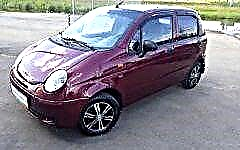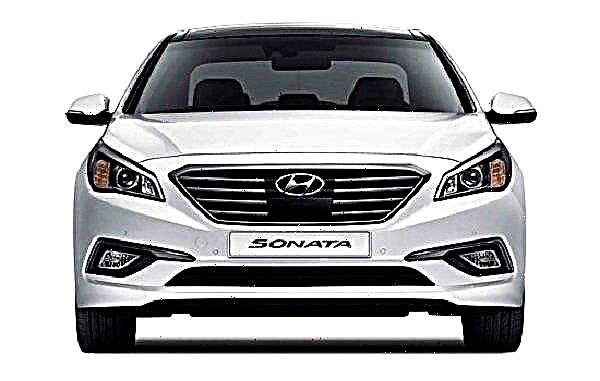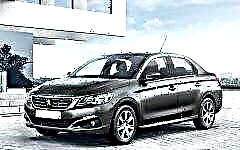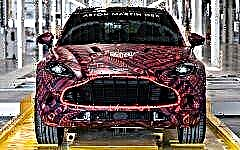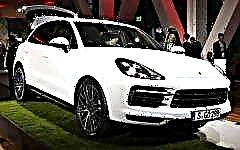
Experienced drivers know that glass tinting performs not only decorative functions, being an attribute of external styling, but also practical ones.
A high-quality film prevents a large amount of ultraviolet rays from entering the passenger compartment and ensures comfort of movement on a bright sunny day. As a result, the inside of the car is cooler and the air conditioning system is more noticeable.
In addition, various interior details are less subject to fading and retain a presentable look for a long time.
High-quality film with minimal light transmission functions isolates the interior from prying eyes, increasing the safety of personal belongings. But in order to correctly apply a film coating to glass, you should familiarize yourself with the main features of this procedure. We propose to consider 5 nuances of vehicle tinting that will help to avoid mistakes.
1. The nuances of choosing a tint film

Despite a number of advantages, tinting also has negative properties. The most important and significant disadvantage is the deterioration of visibility, especially in the dark. Therefore, on the territory of the Russian Federation, it is actually forbidden to darken the windshield.
Other countries also have restrictions. But despite the existing prohibitions, motorists are constantly trying to find the best option with the possibility of effective and legal use of the film, which will increase the comfort of vehicle operation.
The first nuance that a driver encounters when he wants to apply tint is the choice of the appropriate type of film. Many cars are sold with this coating from the passenger compartment. However, the factory layer can be hardly noticeable, so you have to look for better options.
Going to an auto parts store, you should not rush to buy the first product that catches your eye. It is important to carefully consider such nuances as the reputation of the manufacturer, the type and characteristics of the film, as well as the degree of its light transmission.
If tinting is permitted by law, it is enough to decide on its type. A wide range of tint films is on sale, which differ not only in shade, but also in performance. In search of good material, it is better to stop at products from trusted companies such as: Llumar, SunTek, ЗМ.
Products from these brands are more expensive than their Chinese counterparts, but this is justified by their high quality and durability. Cheap fakes are subject to rapid fading, begin to glare, become covered with scratches and bubbles, and also gradually peel off from the glass. If there are financial constraints, it is recommended to stay on budget lines, but from trusted suppliers.
Depending on the material of manufacture, the films are non-metallized and metallized. The former are cheaper and consist of three layers:
- painted layer;
- polymer layer;
- acrylic coating.
The main advantages of non-metallized products include a rich shade without the mirror effect characteristic of cheap products, as well as the absence of the problem of interference with the operation of mobile gadgets, radio and navigation systems.
Among the shortcomings, the likelihood of burnout and loss of the initial color is distinguished after several years of operation. The service life declared by the manufacturer does not exceed 5 years.
As for metallized analogs, they are more expensive products that have a reinforced layer of protection against UV rays and burnout. Due to this feature, the service life of the film reaches 8 years. However, metallized film can negatively affect communication inside the vehicle and cause glare.
In addition, the so-called mirror type, which is produced on the basis of metallized layers, can be found on sale. The material does not burn out and can be used for 10-15 years without losing its initial properties. But this type is not very popular among modern drivers.
Also, its former demand has lost an option called "chameleon", which can change its hue, taking into account lighting conditions and viewing angle.
Therefore, in search of an effective tint film, it is better to stop at a non-metallized solution that combines the best price and quality. If durability and effectiveness of UV protection becomes the key selection criterion, you will need to buy a metallized version.
Having chosen the appropriate type, you should pay attention to such characteristics as light transmission. It must comply with legal requirements and not jeopardize the comfort of driving. In addition, the film must provide reliable protection of the interior from ultraviolet rays.
Some drivers believe that the darker the shade of the tinting, the less ultraviolet light will enter the interior. However, this is not entirely true. For example, high-end, high-value plated products can be virtually transparent and block light much better than a darker non-plated layer.
Therefore, the degree of shading affects only the external characteristics of the vehicle, protection from prying eyes and visibility from the driver's seat.
2. Basic rules of tinting

In the description of the tint film, the index of its darkness is indicated. It is important to take into account that the larger the digital index, the higher the degree of transparency.
The darkest options are considered to be 5% and 10%. They qualitatively prevent the passage of the sun's rays and do not allow outsiders to see what is in the cabin, even on a bright day.
However, at night and in adverse weather conditions, such a film can create a number of inconveniences with visibility.
Therefore, products are usually applied only to the rear hemisphere of the machine. For comparison, products with 15% or 20% do not so well isolate the interior space from ultraviolet radiation and the attention of third parties, but do not violate the comfort and safety of driving in the dark. In most cases, this option is suitable for tinting all windows, with the exception of the windscreen, or just the front door glazing.
Models with 30% light transmission provide only slight shading of the glass, therefore the intensity of protection from the rays is minimal. However, they do not impair the comfort of using the vehicle, regardless of weather conditions and time.
It is not recommended to tint the windshield with the darkest films. Firstly, it may be prohibited by law, and secondly, it could jeopardize driving safety by increasing eye strain. If the vehicle is equipped with powerful headlamps and is used preferably in the urban cycle, it is allowed to use practically transparent athermal products.
To avoid misunderstandings and disputes with representatives of the traffic police, it is necessary to take into account the requirements of GOST, which indicate the permissible degree of shading of windows.
It is better not to cover the windshield with a tint film. If there is a desire to protect it from ultraviolet rays, it is better to use only the athermal version or a product with low dimming.
3. Permits and requirements

Many Russian motorists are familiar with the restrictions of the legislation on tinted front windows (side and windshield).According to the established norms, in this part of the car, a degree of light transmission is allowed at least 70-75%.
Other requirements are specified in regulation 877. It mentions the visibility parameter on the chassis, which is an important point in driving safety.
Particular attention should be paid to the following nuances:
- After tinting the windows, they should not mirror and create glare. Due to this requirement, the installation of conventional and individual varieties of athermal films is prohibited. In addition, it is not allowed to use mirror material even on the rear window. The only thing that can be done with such a layer is to apply it to the upper sector of the windshield in a strip up to 14 cm from the edge.
- If you apply tinting without taking into account the requirements of regulatory enactments of legislation, this may entail penalties in the amount of 500 rubles. The fine will be issued only after the policeman checks the degree of light transmission using special equipment, which is accompanied by additional costs of time.
4. What are the advantages of tinting

The key advantages of tinting are not only the comfort of the driver and passengers when driving on a sunny day, but also safety, since prolonged exposure to ultraviolet radiation on the eyes can impair alertness and cause health problems.
However, there are also negative aspects of tinting. Among them:
- The likelihood of a deterioration in visibility in the dark or in adverse weather conditions. In order to avoid inconvenience, an optimum degree of transparency should be observed. In addition, you can use special brightening mirrors.
- The ambiguous attitude of the legislature to toning. To protect yourself from fines and disputes with traffic police officers, it is important to carefully study the requirements of GOST and adhere to them when applying the tint layer.
The listed cons are negligible in the background pluses of tinting:
- Tinting improves passive safety, therefore, when colliding with an obstacle, the windows are not broken into small fragments, but are fixed with a film, therefore, they do not harm passengers and the driver.
- The film has thermal insulation properties and can reflect or absorb infrared rays. In summer, the material prevents heating of the passenger compartment, and in winter it retains heat energy inside the car.
- High-quality film provides almost complete protection against the negative effects of ultraviolet radiation.
In addition, tinting insulates the contents of the cabin from prying eyes, protecting personal belongings from theft. It will be much more difficult to break the glass with a protective layer.
Despite some drawbacks, toning is a useful and common tuning with many positive qualities.
5. Useful tips

Considering the above information, you should approach the selection and application of tinting with special responsibility. It is important to be guided not only by comfort issues, but also by safety and compliance.
When searching for the optimal film model, it is necessary to give preference to metallized or non-metallized products with an optimal price-quality ratio.
In order for the vehicle to get an attractive appearance, and the contents of the cabin are not visible from the outside, even in bright weather, it will be necessary to apply tint to all the windows. However, in the front and on the side front windows, the percentage of tint cannot exceed 15%, and on the front - 30%.
If the key task for which the film is applied is protection from the scorching sun and the negative effects of ultraviolet radiation, but without impairing visibility, it is better to stop at athermal or metallized film. Light transmittance should be 40%. In the case of using "athermalok", it is possible to obtain only isolation from ultraviolet radiation.
To eliminate problems when choosing and applying tinting on glass, you should consult with specialists who have been working in this area for a long time.

|| list |
- The nuances of choosing a tint film
- Basic rules for tinting
- Permits and Requirements
- What are the benefits of tinting
- Helpful hints

